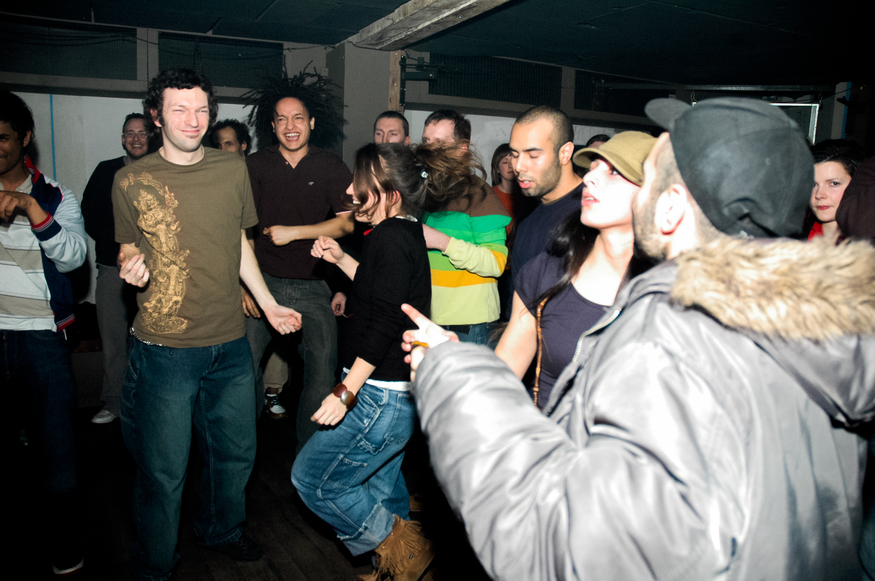When music blogger and photographer Georgina Cook announced a Kickstarter campaign for a book about London's dubstep scene, she was blown away by the response. Here, she talks about Drumz Of The South: The Dubstep Years (2004-2007), and the artists and music that inspired it.

For me dubstep means community, creativity, innovation, friendship and so much more. It means being in dark and entirely safe spaces, engulfed in low end frequencies, and lost in music. It sounds cheesy but I saw Sister Sledge play last year and when they played Lost In Music and I properly listened to the lyrics, I thought, "that was me". I had literally quit my 9-5 to be part of that thing, haha.

I don't know if there is a dubstep scene in the UK now and that's not a bad thing. It seems to me that the idea of music scenes in a traditional sense is being blown open by a generation of people that are interested in (and have access) to many genres and the continua and contexts that those genres sit within.

For example where there was once a dubstep scene, now there are 140 [bpm] and bass music scenes; and there are communities that prioritise vibe or self-expression in the way that youth cultures have always done, but without having one specific genre attached to that expression or vibe. I really like that about today's music and culture.

There's an ongoing conversation in photographic theory about the relationship between memory and photography and how they can get mixed up. Honestly it's like that for me. My memorable experiences are in the photos that you see in the book — driving through London to reach FWD>> at Plastic People every Thursday, experiencing Mala dropping Skream's game changing Midnight Request Line in front of a crowd that included Skepta and JME, meeting and photographing different artists. I remember all of those moments so vividly, and undoubtedly that vividness is because I photographed them and that's a large reason that I take photographs.

Why was London's dubstep scene unique? A few reasons but one of the key ones was the marriage of existing analogue technologies with the new and emerging digital and virtual technologies of the era. My understanding/experience is that dubstep and grime were among the first genres to make use of Web 2.0 while still being rooted in analogue. So for example, you had music and events being shared on forums, blogs and MySpace but were listening to very physical dubplates at events that were also advertised on paper flyers.

I love all of the early artists because they all brought their own influences and distinctive sounds. Mary Anne Hobbs' legendary Dubstep Wars show is the perfect example of this, as well as the albums made around then. If you listen to Distance's My Demons next to Vex'd’s Degenerate, next to Burial, next to Skream's Music To Make You Stagger next to Kode9 & The Spaceape's Memories of The Future, you will hear five entirely different soundscapes. Never a dull moment.

I started dreaming this book into existence many years ago, but it was turning 40 that was the catalyst for finally making it happen. Even from the beginning, when none of us knew how big the genre would become, I knew that I was documenting something for future generations to see and be inspired by and learn from. I greatly value creativity and community and that's what the book is about essentially. But it's also a sort of family photo album in a way.

The way that people that are so passionate about dubstep and the wider cultures and contexts that it sits within came together to help make the book happen is reminiscent of the way early dubstep operated. A DIY, community thing.

Drumz Of The South: The Dubstep Years (2004-2007) by Georgina Cook, available to pre-order now, RRP £35

All images © Georgina Cook



